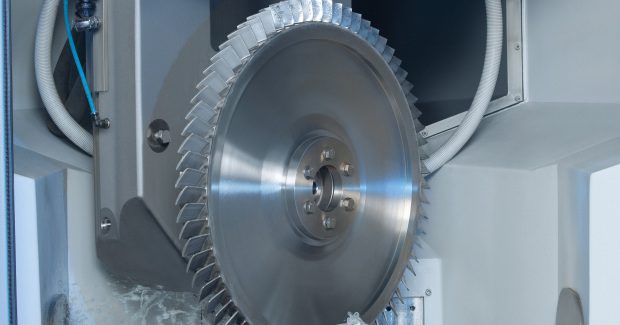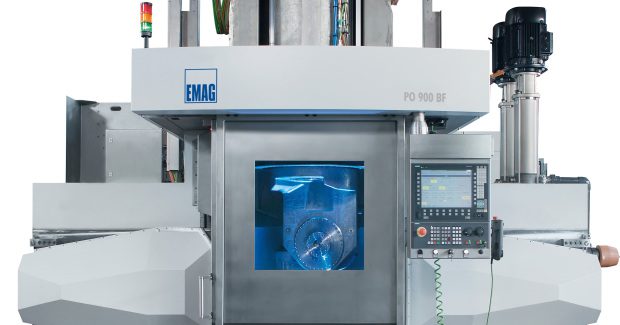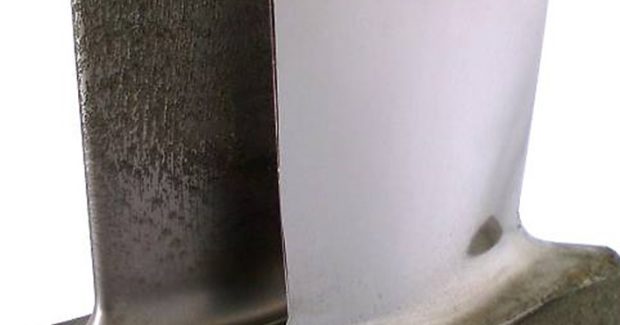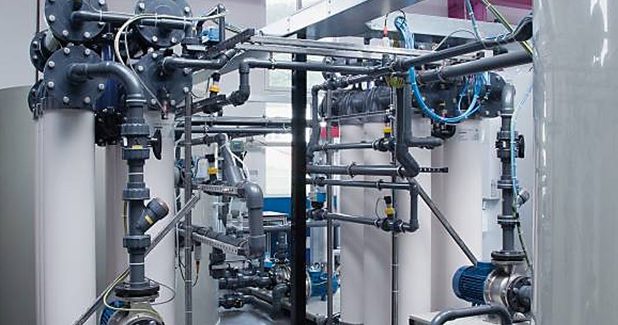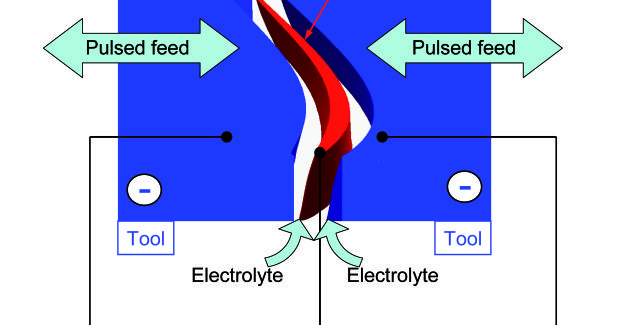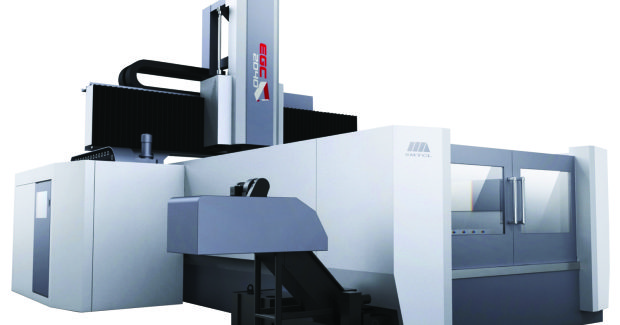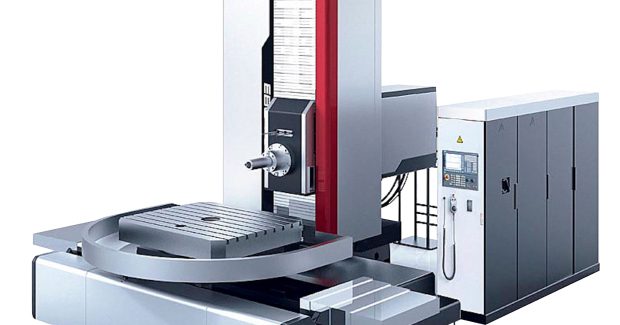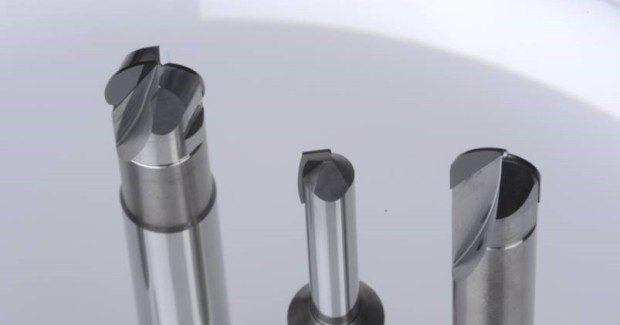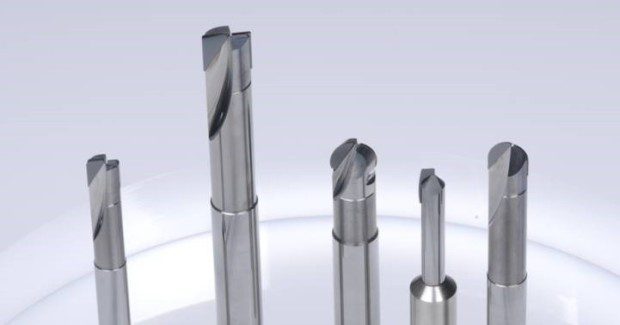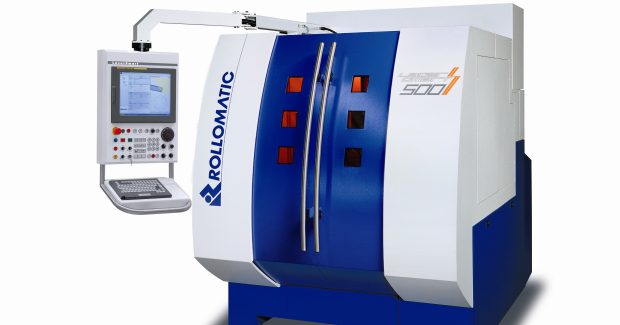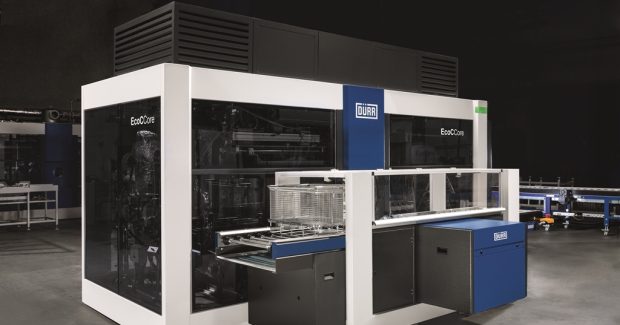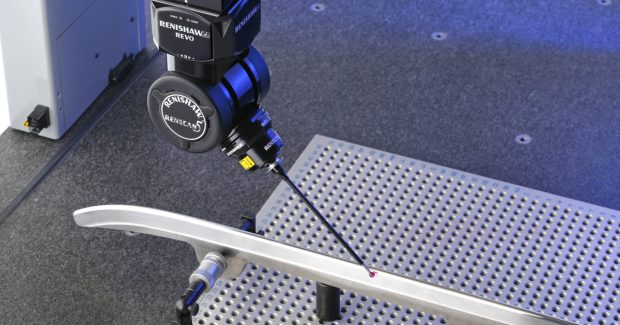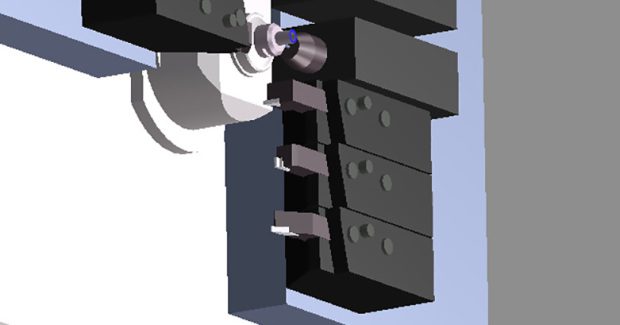Another Look at Aerospace Machining
Competitors in this demanding hotbed of manufacturing are being pushed to find new ways of producing more complex parts. Here are some systems that can help them meet their needs.
Posted: September 10, 2014
Rollomatic provides outstanding service and support from their North American headquarters in Mundelein and another office in California.
Rollomatic Inc., 1295 Armour Boulevard, Mundelein, IL 60060, 866-713-6398, solutions@RollomaticUSA.com, www.rollomaticusa.com.
INNOVATIVE SOLVENT-BASED CLEANING OF AEROSPACE PARTS
When machining aerospace components, grease/oil-free surfaces must be obtained and solvents are the part-cleaning medium of first choice. For these applications, the innovative EcoCCore from Dürr Ecoclean Inc. (Wixom, MI) sets new standards. It is designed for operations with non-halogenated hydrocarbons or modified alcohols under full vacuum conditions.
Equipped with state-of-the-art technology and characterized by an extensive standard equipment level that includes two flood tanks, heat recovery, and full-flow plus bypass filtration capabilities, the EcoCCore meets the most demanding requirements in cleaning quality, process reliability, cost and energy efficiency, high speed, availability, short delivery times and eco-compatibility.
One major step towards improved cleaning quality lies in the new preliminary vapor degreasing process, where the oil-containing distillate is not passed into the flood tank as usual, but is instead directed straight into the distilling system to minimize oil deposits in the flood tank and undesirable contamination of the solvent with oil. This enhances degreasing performance and is particularly beneficial on parts that must be coated or laser-welded after cleaning. This preliminary vapor degreasing step also offers advantages under elevated oil input conditions or when a second flood tank is used for a preservation treatment.
Another innovation that boosts cleaning performance is the use of ultrasonic and filtration simultaneously to discharge particles throughout the process cycle, as opposed to conventional systems where they can settle at the bottom of the work chamber before being filtered. EcoCCore pumps are equipped with variable-frequency drive units that control the volumetric flow rate so the ultrasonic system can exert its effect. This efficient and flexible combined filtration system ensures effective discharge of particles.
The unit also comes with a frequency-controlled rotary drive for rotation and high-accuracy positioning of parts. A “gentle” operating mode prevents sensitive parts from getting dropped or displaced during start-up or handling operations. Internal heating elements have been removed from the stainless steel flood tanks to eliminate potential particle trap points or chip accumulation and reduce risks of re-contaminating parts.
Operating the EcoCCore machine is made simple, fast and safe by the new 7 in color screen that displays self-explanatory pictographs. For example, if a temperature needs to be preset only for the first flood tank, a matching setting for the second tank is then selected automatically. Process tracking and maintenance are also rendered intuitively and more conveniently by the integrated part visualization system. An optional full visualization capability can also be integrated above the control panel.
The work chamber is designed to hold cleaning loads measuring up to 670 mm x 480 mm x 400 mm (26.4 in x 18.9 in x 15.8 in), thereby offering one-third more loading volume than the already established Universam 81C/P system. This means throughput can be doubled, depending on the basket size. The maximum load weight capacity has also been increased by more than 30 percent, to 200 kg (440 lb). With a cycle time of less than 8 minutes, this provides a significant reduction in per-unit cleaning cost.
Particular attention has been paid to high efficiency and ease of maintenance. For example, both flood tanks are heated entirely with thermal energy that is recovered from the distilling circuit. The heat input from the distilling system can be adjusted as needed in multiple stages. This saves energy on the one hand while also guaranteeing high throughput, even with high oil input rates. For the discharge of oil, a new process based on jacket heating is fully independent from the distillation system to ensure optimized and gentle oil removal of a much broader range of oil grades in a safe and reliable manner.
Oil encrustation that requires costly and time-consuming cleaning is avoided. Cost savings are also achieved by the new level control system that effectively prevents a carryover of preserving medium by reducing its consumption. Switching from cleaning to preserving mode is done by simply pushing a button on the operator panel.
The innovative design of this equipment uses an integral loading system and an all-round enclosure made of safety glass. The universal EcoCCore machine requires around five percent less floor space than 81C/P machines. Its top height can also be reduced to only 7.39 ft (2.25 m) by removing only a few components where access to the installation area is difficult. This capability can cut freight charges for shipment to Asia, the U.S. or South America.
Dürr Ecoclean supplies aircraft manufacturers and suppliers, as well as the broad industrial market, with the latest cleaning technology. Appropriate solutions for automation, as well as assembly and test systems, are also offered and integrated by the Ecoclean Group. With individually tailored technology, customers can exploit potential savings in unit costs, energy consumption and process time. Dürr Ecoclean is part of the Dürr Group worldwide and has ten sites in eight countries with approximately 1,000 employees. The Group achieved sales revenues of € 2.4 billion in 2013.
Dürr Ecoclean Inc., 31077 Durr Drive, Wixom, MI 48393-2435, 248-560-2100, Fax: 248-560-2120, Sandro.Siminovich@ecoclean.durr.com, www.durr-ecoclean.com.
HIGH PERFORMANCE BLADE MEASUREMENT AND ANALYSIS
Renishaw Inc. (Hoffman Estates, IL) is highlighting a developing family of high performance hardware and software products for coordinate measuring machines that are specifically designed to aid the measurement and manufacturing of aerospace blades. All products complement the multi-award winning REVO® 5-axis measurement system and include APEXBlade™ planning software for REVO sweep scanning and DMIS programming, MODUS™ airfoil analysis for the calculation and reporting of blade section profile and airfoil characteristics, and SurfitBlade™ to aid reverse engineering of the complete airfoil.
http://youtu.be/Tf2Kju__fDc
A demonstration of the REVO® 5-axis measurement system.
APEXBlade is a software package designed to quickly generate collision free programs that drive the REVO measurement system to carry out complex ‘sweep scans’ that will collect point cloud data from across the complete blade surface. The CAD model is imported into the virtual REVO CMM environment prior to the automatic generation of the measurement plan. Both transverse and longitudinal scans are supported and each sweep can be split, which is useful for edges where the actual position is expected to be significantly different from the nominal CAD. Once the user is happy with the program, a DMIS file is generated that can be executed within Renishaw’s MODUS metrology software.
A key advantage of this new approach to blade measurement is that a cloud of tip center data points is generated over the entire airfoil and root surfaces. The MODUS point cloud sectioning (MPCS) functionality then allows ‘on surface’ sections to be constructed by intersecting any defined plane with the captured point cloud. This can be carried out at the time of measurement, or in the future if further sections at different locations are required, without the need for re-measurement of the blade.
The MODUS airfoil module then allows the user to take the nominal aerofoil sections available from the CAD model and the actual sections from the MPCS to provide blade fitting functionality for the reporting of blade section profile and aerofoil characteristics. MODUS offers comprehensive graphical reporting tools and the profile measurement results, which are fully integrated with all other feature measurement reports, can be output in pdf file format.
For users requiring a reverse engineering capability, SurfitBlade software is an offline application used to generate NURBS blade surface forms for use in downstream processes such as computational fluid dynamics and finite element analysis. It also allows average blade geometry to be established from a series of blade results.
In summary, this airfoil inspection suite provides automatic generation of the CMM program, rapid, high accuracy REVO data collection and comprehensive tools for cross section or full surface analysis.
Renishaw Inc., 5277 Trillium Boulevard, Hoffman Estates, IL 60192, 847-286-9953, Fax: 847-286-9974, jeffrey.seliga@renishaw.com, www.renishaw.com.
UNIVERSAL KINEMATIC MACHINE FOR MULTI-TASKING
Gibbs and Associates (Moorpark, CA), developer of GibbsCAM® software for programming CNC machine tools and a Cimatron (Giv’at Shmuel, Israel) company, introduces UKM (Universal Kinematic Machine), the brand-new engine behind the release of GibbsCAM 2015. UKM is a complete reengineering of the CAM engine and how it relates to machine definitions and machine tools, blurring the line between the definition of mills and lathes as a powerful tool for aerospace machining applications.
“CAM systems were designed based on the way mills and lathes were originally created to move,” explains Bill Gibbs, the chief executive officer and president of Gibbs and Associates. “Mill-turns and multi-task machines (MTM) started merging the two. UKM was created from the ground up with no limitations. It can handle any number of axes in any direction, with multiple tools cutting simultaneously. With UKM, users can program and accurately simulate virtually any machine today and even machines that haven’t been invented yet.”
In a complete paradigm shift, the benefits of the UKM engine extend throughout the entire product line, not just those areas relating to complex machines. Dramatic improvements to rendering and Machine Simulation provide the most accurate simulation available, giving customers the confidence that what they see on the computer screen is what will happen at the machine. Machine simulation and post processors are built on the same kinematic model, optimizing the programmer’s time and ensuring complete accuracy.
The new UKM architecture is backward compatible so that current post processors and machine simulation models for GibbsCAM will continue to provide a return on investment. In addition, users will be able to program and simulate the most complex machines on the market, including machines from Bumotec, Citizen, DMG MORI, Doosan, Matsuura, Mazak, Nakamura-Tome, Okuma, Star, Tornos, Willemin-Macodel, and many others.
Significant changes have been made to the tooling functionality of GibbsCAM 2015. In addition to new tool types being added (Barrel, Dovetail, Convex Tip, E-style ISO insert, and tools defined by solids), there is now dynamic 3D viewing of tools and toolholders in the tool dialog, allowing users to accurately visualize the tools they are selecting for the job.
An entire new category of tooling has been added, called Intermediate Tooling, that allows for items that are neither tools nor fixed parts of the machine, such as fixtures (chucks, tailstocks, steadyrests) and toolblocks (adapter blocks, holders for toolholders, and the like). Programmers can create libraries of toolblocks to easily setup complex machines, and can share those libraries across different parts, saving time and reducing errors.
Significant improvements throughout the software range from geometry creation to toolpath strategies, including additional High Speed Machining (HSM) strategies. New functionality has been added to aid in the importing and machining of hole features. Holes are now treated as fully associative features of solid bodies, including those imported from SolidWorks, Solid Edge, Autodesk Inventor, or CATIA V5. Compound holes (holes with multiple segments that might each be tapered or threaded) are now supported as well.
New Geometry tools include improved spline editing and contour tracing capabilities. Improvements to machining include new Adaptive Roughing capabilities, pre-drilling and background processing for VoluMill, and many new capabilities for the Tombstone Management System, which has long been recognized as the most comprehensive software for programming parts on a tombstone.
For over thirty years, Gibbs and Associates has been a leader in providing cutting edge CAD/CAM technology, while maintaining its signature ease-of-use and productivity that empowers the NC programmer, machinist, and manufacturing engineer, not eliminating them. The current GibbsCAM product line supports 2- through 5-axis milling, turning, mill/turning, multi-task simultaneous machining and wire-EDM and also provides fully integrated manufacturing modeling capabilities that include 2D, 2.5D, 3D wireframe, surface, and solid modeling.
GibbsCAM is Compatible with Windows 7, Windows 8 and Certified for Windows Vista, with data exchange capabilities that can access the broadest range of native and industry standard CAD data formats. It is certified under the Autodesk Inventor Certified Program, is a Siemens Solution Partner Program-PLM for Solid Edge product, is a Gold Tier Partner within the PTC Partner Advantage Program and is a SolidWorks Certified CAM Product.
GibbsCAM is either offered or endorsed by a number of leading worldwide control and machine tool manufacturers, including GE Fanuc, Infimatic, Siemens, Doosan Infracore, DMG MORI, Haas, Index, MAG, Mazak, Mitsubishi, Okuma and Tornos. Gibbs and Associates distributes its products worldwide through a network of international resellers.
Gibbs and Associates, 323 Science Drive, Moorpark, CA 93021, 805-523-0004, Fax: 805-523-0006, www.gibbscam.com.


